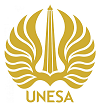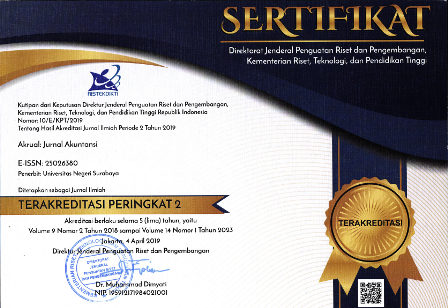The Interactions Price Synchronicity: Connections between Indonesia's Stock Index and Asian Equities Markets
DOI:
https://doi.org/10.26740/jaj.v16n1.p25-38Keywords:
Asian, Stock, Portofolio, Market, VARAbstract
Introduction / Main Objectives: This research aims to investigate how other Asian stock markets have affected the Indonesian market and how much of an effect they have had. Background Problems: Looking at the capital market is a way to measure the health and growth of a country's economy. Consequently, a nation will employ a wide range of measures to lessen the impact of potential threats and make the most of its available resources. Research Methods: Using daily time series data from 2010 to 2022, the number of observations in this study reached 2712. This study employs vector autoregression (VAR). Findings/Results: The study's findings indicated that the stock indices of Malaysia and Thailand affected the Indonesian indices. The Indonesian stock market index (IHSG) reacted negatively to the indices of the Philippines (PSEI), Malaysia (KLCI), and South Korea (KOSPI) and positively to those of Hong Kong (HANG SENG), Thailand (SETI), and Japan (NIKKEI). Conclusion: Capital market portfolio diversification allows investors to evaluate alternative investing techniques. It is essential to have a diversified worldwide portfolio while trading on Asian exchanges. The study's findings shed light on the Asian stock market's tendencies and patterns in novel ways.
References
Abedifar, P., Hasan, I., & Tarazi, A. (2016). Finance-growth Nexus and Dual-banking Systems: Relative Importance of Islamic Banks. Journal of Economic Behavior and Organization, 132, 198–215. https://doi.org/10.1016/j.jebo.2016.03.005
Adisetiawan, R., Bukit, P., & Ahmadi, A. (2020). Future Spot Rate: The Implications in Indonesia. Jurnal Ilmiah Universitas Batanghari Jambi, 20(1), 155–167. https://doi.org/10.33087/jiubj.v20i1.874
Al Nasser, O. M., & Hajilee, M. (2016). Integration of Emerging Stock Markets with Global Stock Markets. Research in International Business and Finance, 36, 1–12. https://doi.org/10.1016/j.ribaf.2015.09.025
Aladesanmi, O., Casalin, F., & Metcalf, H. (2019). Stock Market Integration between the UK and the US: Evidence over Eight Decades. Global Finance Journal, 41(3), 32–43. https://doi.org/10.1016/j.gfj.2018.11.005
Ardana, Y. (2017). Co- Integration dan Contagion Effect antara Indeks Saham Syariah di Beberapa Negara dan Jakarta Islamic Index (JII) Pada Periode Krisis Yunani. Jurnal Manajemen Magister Darmajaya, 3(2), 224–260.
Batten, J. A., Kinateder, H., Szilagyi, P. G., & Wagner, N. F. (2019). Time-varying Energy and Stock Market Integration in Asia. Energy Economics, 80, 777–792. https://doi.org/10.1016/j.eneco.2019.01.008
Cakici, N., & Zaremba, A. (2022). Salience Theory and the Cross-section of Stock Returns: International and Further Evidence. Journal of Financial Economics, 146(2), 689–725.
Dendramis, Y., Tzavalis, E., & Adraktas, G. (2018). Credit Risk Modelling under Recessionary and Financially Distressed Conditions. Journal of Banking and Finance, 91, 160–175. https://doi.org/10.1016/j.jbankfin.2017.03.020
Driss, H., Drobetz, W., El Ghoul, S., & Guedhami, O. (2021). Institutional Investment Horizons, Corporate Governance, and Credit Ratings: International Evidence. Journal of Corporate Finance, pp. 67, 1–26. https://doi.org/10.1016/j.jcorpfin.2020.101874
Dyck, A., Lins, K. V., Roth, L., & Wagner, H. F. (2019). Do Institutional Investors Drive Corporate Social Responsibility? International Evidence. Journal of Financial Economics, 131(3), 693–714. https://doi.org/10.1016/j.jfineco.2018.08.013
Gkillas, K., Tsagkanos, A., & Vortelinos, D. I. (2019). Integration and Risk Contagion in Financial Crises: Evidence from International Stock Markets. Journal of Business Research, pp. 104, 350–365. https://doi.org/10.1016/j.jbusres.2019.07.031
Huang, Z. xiong, Tang, Q., & Huang, S. (2020). Foreign Investors and Stock Price Crash Risk: Evidence from China. Economic Analysis and Policy, 68, 210–223. https://doi.org/10.1016/j.eap.2020.09.016
Islam, R., Dharfizi, A. D. H., Pero, S. D. M., & Sultana, S. (2022). Analyze the Importance of Energy in Malaysia's Economy and Diplomacy. International Journal of Energy Economics and Policy, 12(3), 305–314. https://doi.org/10.32479/ijeep.12870
Jacob, T., Raphael, R., & Stebiya, M. V. (2021). Capital Market Integration of Asean-5 Countries : An Empirical Analysis. Hasanuddin Economics and Business Review, 5(2), 30–35. https://doi.org/10.26487/hebr.v5i2.2796
Kao, Y. S., Zhao, K., Ku, Y. C., & Nieh, C. C. (2019). The Asymmetric Contagion Effect from the U.S. Stock Market Around the Subprime Crisis between 2007 and 2010. Economic Research-Ekonomska Istrazivanja, 32(1), 2422–2454. https://doi.org/10.1080/1331677X.2019.1645710
Laksana, M. P. A. (2022). Export Taxes and Trade Pattern: Case from the Indonesian Mineral Industry. Jurnal Perencanaan Pembangunan: The Indonesian Journal of Development Planning, 6(1), 37–53. https://doi.org/10.36574/jpp.v6i1.243
Liu, Y. (2020). The Importance of Trust Distance on Stock Market Correlation: Evidence from Emerging Economies. Borsa Istanbul Review, 20(1), 37–47. https://doi.org/10.1016/j.bir.2019.08.002
Mama, H. B. (2018). Nonlinear Capital Market Payoffs to Science-led Innovation. Research Policy, 47(6), 1084–1095. https://doi.org/10.1016/j.respol.2018.03.013
Montinari, L., & Stracca, L. (2016). Trade, Finance or Policies: What Drives the Cross-border Spillover of Business Cycles? Journal of Macroeconomics, 49, 131–148. https://doi.org/10.1016/j.jmacro.2016.06.001
Mubarok, F. (2023). Volatility of Islamic Stock Market and Exchange Rate : Granger Causality and GARCH Approach. Journal of Innovation in Business and Economics, 7(1), 29–38.
Neanidis, K. C. (2019). Volatile Capital Flows and Economic Growth: The Role of Banking Supervision. Journal of Financial Stability, pp. 40, 77–93. https://doi.org/10.1016/j.jfs.2018.05.002
Pástor, Ľ., Stambaugh, R. F., & Taylor, L. A. (2021). Sustainable Investing in Equilibrium. Journal of Financial Economics, 142(2), 550–571. https://doi.org/10.1016/j.jfineco.2020.12.011
Rizvi, S. A., & Arshad, S. (2016). How Does Crisis Affect Efficiency? An Empirical Study of East Asian Markets. Borsa Istanbul Review, 16(1), 1–8. https://doi.org/10.1016/j.bir.2015.12.003
Robiyanto, & Fajar Hartanto, A. (2018). Contagion Effect Dan Integrasi Pasar Modal Di Kawasan Asia, Eropa Dan Amerika. Jurnal Organisasi Dan Manajemen, 14(1), 1–9. https://doi.org/10.33830/jom.v14i1.138.2018
Saiti, B., Bacha, O., & Masih, M. (2014). The Diversification Benefits from Islamic Investment During the Financial Turmoil: The Case for the US-based Equity Investors. Borsa Istanbul Review, 14(4), 196–211. https://doi.org/10.1016/j.bir.2014.08.002
Seth, N., & Sharma, A. K. (2015). International Stock Market Efficiency and Integration Evidences from Asian and US Markets. Journal of Advances in Management Research, 12(2), 88–106. https://doi.org/10.1108/JAMR-07-2011-0010
Setiawan, B., & Taufik, T. (2016). Pengaruh Pasar Modal Amerika Terhadap Pasar Modal Lima Negara Asean Pada Kondisi: Sebelum, Saat, Dan Sesudah Krisis Subprime Mortgage. Jurnal Manajemen Dan Bisnis Sriwijaya, 14(4), 559–569.
Silvers, R. (2021). Does Regulatory Cooperation Help Integrate Equity Markets? Journal of Financial Economics, 142(3), 1275–1300. https://doi.org/10.1016/j.jfineco.2021.05.040
Sinyakov, A., & Yudaeva, K. (2016). Central Bank Policy Under Significant Balance-of-payment Shocks and Structural Shifts. Russian Journal of Economics, 2(3), 246–278. https://doi.org/10.1016/j.ruje.2016.09.001
Theophilus, T., Uzoma-news, D. C., & David-way, M. O. (2022). The Effects of COVID-19 on the interrelationship among Oil Prices, Stock Prices and Exchange Rates in Selected Oil Exporting Economies. Resources Policy, pp. 77, 1–26. https://doi.org/10.1016/j.resourpol.2022.102744
Wang, W., Su, C., & Duxbury, D. (2022). The Conditional Impact of Investor Sentiment in Global Stock Markets: A Two-Channel Examination. Journal of Banking & Finance, pp. 138, 1–17.
Wu, F. (2019). Stock Market Integration in East and Southeast Asia: The Role of Global Factors. International Review of Financial Analysis, pp. 67, 1–42. https://doi.org/10.1016/j.irfa.2019.101416
Zubair, S., Kabir, R., & Huang, X. (2020). Does the Financial Crisis Change the Effect of Financing on Investment? Evidence from Private SMEs. Journal of Business Research, 110, 456–463. https://doi.org/10.1016/j.jbusres.2020.01.063
Downloads
Published
How to Cite
Issue
Section
License
Copyright (c) 2024 Faizul Mubarok, Andi Harmoko Arifin, Yudhi Prasetiyo

This work is licensed under a Creative Commons Attribution-NonCommercial 4.0 International License.
 Abstract views: 299
,
Abstract views: 299
, PDF Downloads: 275
PDF Downloads: 275

















